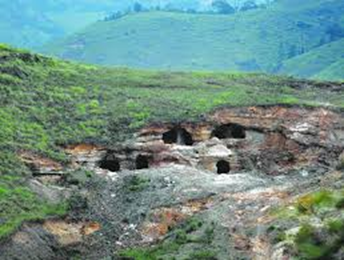Content:
- The panchayati raj movement is in distress
- The silent crisis of rat-hole mining
The panchayati raj movement is in distress
Introduction
- The 73rd Constitutional Amendment Act (1992) institutionalized the Panchayati Raj System in India, marking a shift towards decentralized governance.
- However, the momentum towards deepening local governance has stalled due to various structural, fiscal, and administrative challenges.
- Big shifts in technology, society, and governance threaten the relevance of panchayats unless their role is redefined.
Relevance : GS2 – Governance, Decentralization, and Local Government
Practice Question : Examine the factors leading to the decline of the Panchayati Raj movement in India. Suggest measures to strengthen decentralized governance. (250 words)
Successes of Panchayati Raj
Electoral Participation:
- Panchayat elections are keenly contested across India, ensuring grassroots political engagement.
- Women’s representation has significantly increased—nearly 14 lakh elected women representatives in local bodies.
Implementation of Social Sector Schemes:
- Various welfare and development schemes are now implemented through panchayats.
- State Finance Commissions (SFCs) were mandated to ensure financial devolution to local governments.
Challenges & Reasons for the Decline
Administrative Decentralization Has Stagnated
- States have not fully devolved administrative powers to local governments.
- Only 20% of states have transferred all 29 subjects listed in the Eleventh Schedule (Ministry of Panchayati Raj, 2022).
- Lack of staff and bureaucratic control over functions weaken panchayat autonomy.
Fiscal Dependency & Loss of Autonomy
- Reduction in untied grants:
- 13th Finance Commission (2010-15): 85% untied grants.
- 15th Finance Commission (2021-26): Reduced to 60%.
- Increase in direct transfers (₹1.45 lakh crore → ₹2.36 lakh crore) has strengthened central control over funds.
- Marginalization of state governments through conditional grants reduces local decision-making power.
Welfare State Model & Cash Transfers
- Rise of Direct Benefit Transfers (DBTs) using the Jan Dhan-Aadhaar-Mobile (JAM) trinity bypasses panchayats.
- Example: PM-KISAN Scheme (₹6,000 per farmer annually) operates without panchayat involvement, reducing local accountability and grievance redressal.
Urbanization & Shifting Policy Focus
- Rural population declined from 75% (1990) to ~60% (present), shifting focus to urban governance.
- Increased municipal reforms & urban financing lead to neglect of rural governance structures.
Ways to Revive the Panchayati Raj System
Strengthening Decentralization:
- States must fully implement the Eleventh Schedule, ensuring true devolution of power.
- Increase untied grants for local decision-making autonomy.
Reintegrating Panchayats in Welfare Delivery:
- Make panchayats accountable for DBTs & grievance redressal in schemes like PM-KISAN.
- Leverage digital tools to improve participation in planning & governance.
Expanding the Role of Panchayats:
- Water conservation, renewable energy, and disaster risk management can be decentralized to panchayats.
- Support for internal migration through rural-urban connectivity mechanisms.
New Vision for Panchayati Raj:
- Redefine panchayats’ role in a changing governance model to ensure continued rural empowerment.
The silent crisis of rat-hole mining
Background
- Incident: The Gauhati High Court took suo motu cognisance of the mining tragedy in Umrangso, Assam (January 6, 2024).
- Casualties: Nine labourers trapped, at least four dead.
- Recurrent Issue: Similar tragedies in Meghalaya (30 miners dead in five years).
- Core Issue: Weak enforcement of laws and unchecked operations by influential individuals.
Relevance : GS 3(Mining , Disastser Management )
Practice Question : Discuss the challenges associated with rat-hole mining in India and suggest policy measures to tackle them. (250 words)

Why Illegal Mining Persists?
Historical Context
- 1980s Expansion: Driven by industrial demand from West Bengal & Bangladesh.
- Terrain Challenge: Mechanized mining is difficult, leading to reliance on rat-hole mining.
Rat-Hole Mining Methods
- Side-cutting: Coal seams extracted along hill slopes.
- Box-cutting: Deep pits (up to 400 feet) with horizontal tunnels.
Hazards
- Safety Risks: Narrow tunnels prone to collapse & flooding.
- Labour Exploitation:
- Migrant labourers trapped in debt cycles.
- Children trafficked for mining due to their ability to navigate tunnels.
- Environmental Degradation: Unclosed mine openings (~26,000), soil erosion, groundwater contamination.
Legal and Policy Aspects
Regulatory Actions
- NGT Ban (2014): Prohibited rat-hole mining due to safety & environmental concerns.
- Supreme Court (2019): Upheld the ban in State of Meghalaya v. All Dimasa Students Union.
Weak Enforcement
- Influence of Bureaucrats & Coal Mafias: Illegal mines continue under their protection.
- Threats to Whistleblowers: Activists & officials face intimidation.
Regulatory Loopholes & State Non-Compliance
- Meghalaya:
- Attempted exemption under Schedule 6, Paragraph 12A(b) to bypass MMDR Act (1957).
- Passed a resolution for exemption but remains unapproved.
- Section 23C of MMDR Act mandates prevention of illegal mining—yet no State law enforcement.
- Assam:
- Persistent illegal rat-hole mining despite NGT ban & Supreme Court directives.
- No stringent State-level regulations to curb the practice.
- Potential Central Intervention: As seen in Bellary, Karnataka (2011), where the Centre imposed a mining ban under Section 30 of MMDR Act.
Way Forward: A Multi-Faceted Approach
1. Stronger Legal Framework
- Amend MMDR Act to criminalize rat-hole mining explicitly.
- Stricter Penalties:
- Enhance punishment under Section 21 for violations.
- Establish monitoring & accountability mechanisms.
2. State-Specific Reforms
- Empower State Governments under Section 23C of MMDR Act to regulate mining effectively.
- Ensure enforcement of NGT ban by closing loopholes.
3. Alternative Livelihoods
- Promote eco-tourism, agroforestry, and rural industries to reduce mining dependency.
4. Technological Surveillance
- Satellite-Based Monitoring to track illegal mining activities.
- Mining Surveillance System (MSS) by the Ministry of Mines can strengthen enforcement (as seen in Karnataka).
5. Community Participation
- Strengthen Forest Rights Act, 2006 to involve local communities in decision-making.
- Mandate local consent before granting mining approvals.




